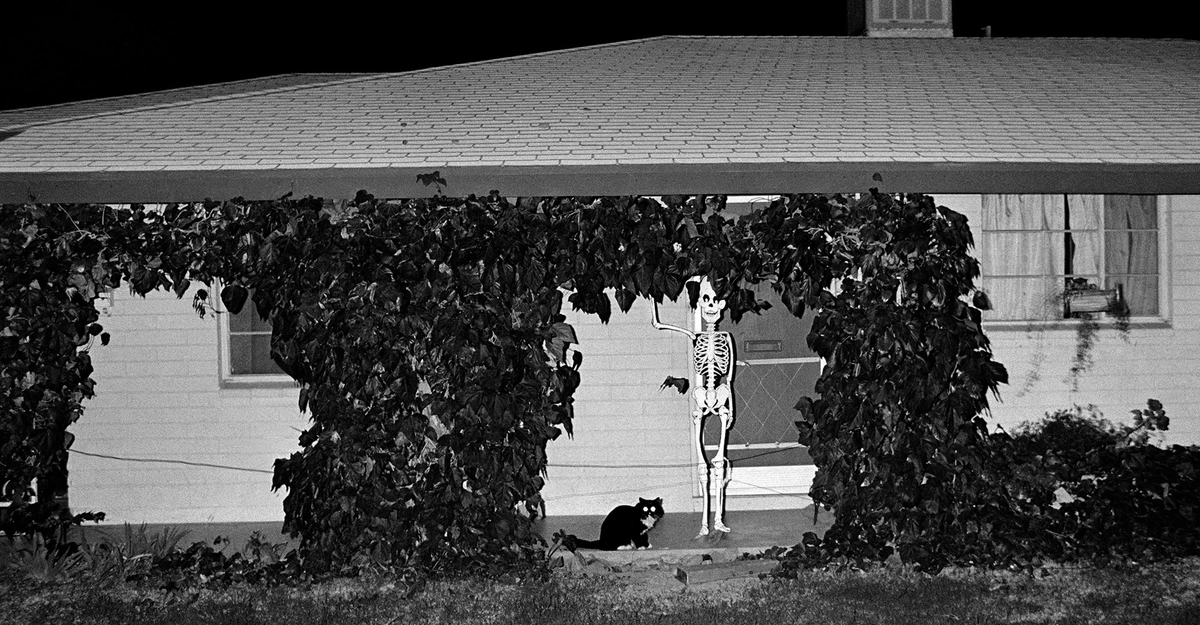Copyright The Atlantic

Over the past 20 years, Google search-trend data for the term horror movie have looked like heartbeat pulses on a cardiac monitor. Each October, searches spike as people seek out a good fright. Morbid entertainment is a massive industry. Scary movies are box-office winners, and true-crime podcasts consistently rank at the top of the charts. A nice scare can be a thrill, but why are so many of us compelled to seek out fear and anxiety when we’re already living in such stressful times? I’ve spent years exploring why people are so intrigued by the macabre, including in horror films and haunted houses, conspiracy theories and true crime. I call this phenomenon, and the personality trait that predicts it, morbid curiosity. My research at the Recreational Fear Lab in Denmark suggests not only that frightening stories and scary activities can temporarily distract us from the terrors of the real world, but that they might actually make us more resilient to the stressors that we face. A good scare, in other words, could even help us fight anxiety. In March 2020, right around the time the coronavirus was declared a global pandemic, the decade-old film Contagion spiked in popularity. In the film, a (fictional) virus called MEV-1 wreaks havoc on the world. Those infected develop a terrible cough, fatigue, headache, and fever. Travel is banned, businesses close, stores are plundered for household supplies, and word of supposed miracle cures begins to spread as scientists race to develop a vaccine. Pandemic-themed films weren’t the only ones that viewers were obsessing over at the time. In 2020 and 2021, the horror genre as a whole accelerated its ascent in terms of market share. Apparently, scary times called for scary pastimes. Perhaps people were seeking out simulations of the event that they were living through as a way to understand how it might play out. But that doesn’t explain why so many people were watching slasher and zombie films. On the surface, the impulse to terrorize ourselves in already terrifying times seems counterintuitive, but it jibes with what many horror fans have accidentally discovered and have been discussing online for years: Scary-safe experiences, such as horror movies and haunted attractions, appear to have some calming effects. In April 2020, for a study published in Personality and Individual Differences, I asked hundreds of people which genres of movies they enjoyed and if they had ever seen any pandemic-themed films. I then had participants complete a survey measuring psychological resilience, and a questionnaire I created to measure morbid curiosity (asking, for instance, how much people agreed with the statement “If I lived in medieval Europe, I would be interested in attending a public execution”). I found that morbidly curious people were more resilient to the uncertainty of the pandemic than others, and more confident in their ability to get through the difficult times. Likewise, horror fans weren’t experiencing the same spike in anxiety, irritability, and sleeplessness that those who didn’t watch slasher films or paranormal flicks were. Importantly, these results held true even when controlling for age, sex, income, and measures of personality. What’s more, people who had seen at least one pandemic-themed film were more likely to say that they felt prepared for the outbreak—that, for example, they could predict how bad things would get and knew early on which items to stockpile—than those who had never seen such a film. My theory for these findings is that engaging with fictional scenarios of danger lets us safely experience fear and anxiety, and become better at regulating those negative emotions. Then, when real danger presents itself, we feel prepared—if not for the specific scenario, at least for the feelings it unleashes. Otherwise put: Scary-safe experiences serve as a kind of exposure therapy, getting us more comfortable with being uncomfortable. My subsequent studies have borne this out. In October 2020, I set up a field study at a haunted attraction inside an abandoned fishery in the woods of Vejle, Denmark. I surveyed participants before and after moving through the haunt. Contrary to the typical assumption that people enjoy horror just for the adrenaline rush, I found that many people at the haunt were what I call “white knucklers” and “dark copers”—that is, those who are truly afraid of horror yet still find ways to enjoy it, or who use horror as a way to deal with difficult feelings or hard times. Both groups said that braving the haunted attraction gave them a sense of self-confidence and helped them understand how they might respond in other frightening situations. The key to using horror for healing appears to be getting the fear factor just right. My colleagues and I have found that most people have a fear sweet spot of about a seven on a scale of one to 10: Too much fear isn’t fun, but too little is boring. For some people, that means making a scary experience more extreme—for instance, by watching a spooky movie with all the lights in the house turned off. Others downregulate their fear by covering their eyes when faced with jump scares or gore. There’s still much to be explored about our fascination with the darker side of life and how it can be harnessed for good. One lab in the Netherlands has been experimenting with using horror as a therapeutic tool. A few years ago, researchers there developed a spooky video game called MindLight for children with anxiety, which has been found in some studies to be as effective as cognitive behavioral therapy. The player controls a character who is lost in a dark, haunted mansion. To complete the game, they use a flashlight to defeat the shadowy monsters that block their way. While playing, the child wears a headband that measures their brain waves, and the strength of their flashlight is directly related to how calm they are. When they’re too anxious, a pop-up reminds them to manage their fear. Once the player recollects themselves, their light shines brightly again and they can defeat the monsters. This fall, as you trawl Netflix for a spooky film, remember that horror can do more than just frighten us for fun; it can train us to deal with the scary parts of life.



